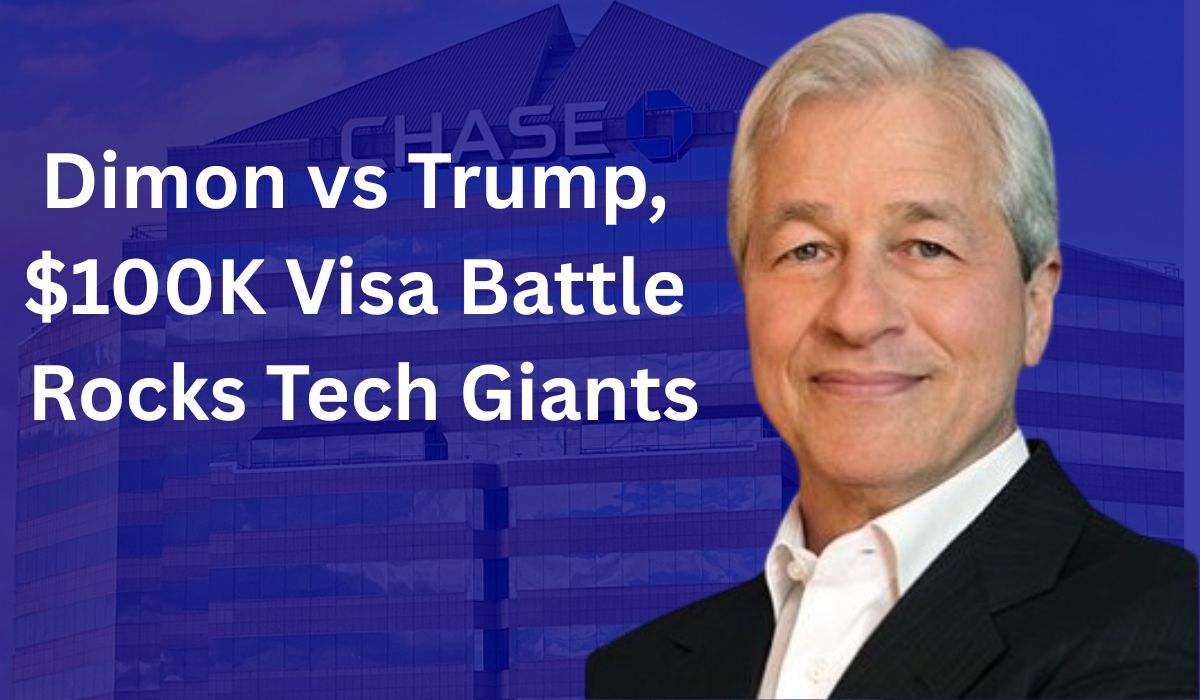JPMorgan Chase CEO Jamie Dimon has emerged as the latest high-profile business leader to question the Trump administration‘s sweeping changes to H-1B visa policy. The new requirement mandating $100,000 payments for new visa workers has caught the business community off guard, sparking intense debate about immigration, innovation, and American job protection.
Dimon Advocates Merit-Based Immigration Reform
Speaking during JPMorgan’s summit in India with CNBC TV18, Dimon expressed support for controlled immigration while emphasizing merit-based systems. In his public remarks, Dimon stated his belief in merit-based immigration, noting that while border control remains important for any nation, “after that, we should have good immigration.”
The JPMorgan CEO’s position reflects the nuanced challenge facing policymakers: balancing legitimate border security concerns with America’s need for skilled talent. Dimon’s comments suggest the changes caught business leaders unprepared, indicating limited consultation with major employers before implementation.
Tech Giants Join the Immigration Policy Debate
The H-1B discussion has drawn responses from other tech industry leaders. Nvidia CEO Jensen Huang emphasized that immigration remains “critical to his company and America’s future.” OpenAI CEO Sam Altman echoed this sentiment, stressing the importance of bringing “the smartest people into the US.”
These statements highlight the tech sector’s dependence on international talent, particularly as companies compete globally for AI and software development expertise. The timing of these concerns coincides with rapid technological advancement requiring specialized skills.
The Numbers Behind the H-1B System
Current H-1B visa distribution reveals concentrated usage among major technology companies. Analysis shows that Amazon holds approximately 10,000 H-1B visas, while Meta and Microsoft each maintain around 5,000. The so-called “Magnificent Seven” tech companies control nearly 28,000 visas – representing almost half of all H-1B allocations.
Geographically, 71% of these visas go to workers from India, with another 11% allocated to Chinese nationals. This concentration raises questions about whether the program effectively serves its intended purpose of addressing skill shortages across diverse industries.
Employment Market Context and Concerns
The visa debate occurs against concerning employment trends for recent graduates. Data indicates a 6% unemployment rate specifically for new college graduates – significantly higher than overall unemployment figures. This disparity has fueled arguments about prioritizing American workers, particularly those entering the job market.
Critics point to potential system abuse, arguing that some companies may use H-1B visas to access lower-cost labor rather than addressing genuine skill gaps. The average H-1B salary of $167,165 suggests these positions target skilled professionals, yet questions persist about whether market-rate compensation consistently applies.
Innovation vs. Job Protection Trade-offs
The policy discussion centers on fundamental economic trade-offs between innovation and domestic job protection. Business leaders argue that restricting high-skilled immigration could undermine America’s technological competitiveness. Conversely, advocates for tighter controls contend that prioritizing American workers, even at higher costs, benefits the broader economy.
This tension reflects broader debates about globalization’s impact on American manufacturing and service jobs over recent decades. The H-1B discussion represents a specific case study in these larger economic policy questions.
Specialized Sectors Face Unique Challenges
Healthcare presents a particularly complex case within the H-1B framework. Medical professionals, including doctors serving rural areas, rely on these visas to address physician shortages in underserved regions. The administration has indicated willingness to consider exemptions for sectors deemed “important for the country,” suggesting potential flexibility in implementation.
This indicates recognition that blanket policies may not address sector-specific needs effectively. Rural healthcare access, in particular, depends heavily on international medical graduates willing to serve in areas where domestic physicians are scarce.
Market Dynamics and Consumer Behavior
The immigration policy debate connects to broader questions about American consumer preferences and economic nationalism. While surveys suggest consumer willingness to pay premium prices for American-made products, purchasing behavior often contradicts these stated preferences.
This disconnect between expressed values and actual spending patterns complicates policy discussions about accepting higher costs for domestic production. The challenge applies across industries, from manufacturing to high-skilled services.
Business Community Response and Adaptation
Major corporations now face strategic decisions about workforce planning under the new visa requirements. For companies heavily dependent on H-1B workers, the $100,000 fee represents a significant cost increase that may alter hiring strategies.
The concentration of visas among large tech companies suggests these firms may absorb higher costs more easily than smaller businesses. This could potentially reshape competitive dynamics within the technology sector, favoring companies with greater financial resources.
Looking Forward: Policy Implementation and Industry Impact
The H-1B policy changes will likely influence broader immigration reform discussions and business investment decisions. Companies may accelerate domestic training programs or relocate certain operations to countries with more favorable immigration policies.
The ultimate impact depends on implementation details and potential modifications based on industry feedback. Dimon’s public concerns, along with other business leaders’ positions, may influence policy refinement as the administration balances various competing interests.
For investors and business leaders, these developments signal potential shifts in labor costs, operational strategies, and competitive positioning across technology and other skilled sectors. The resolution of these policy debates will significantly impact America’s position in global talent competition.
